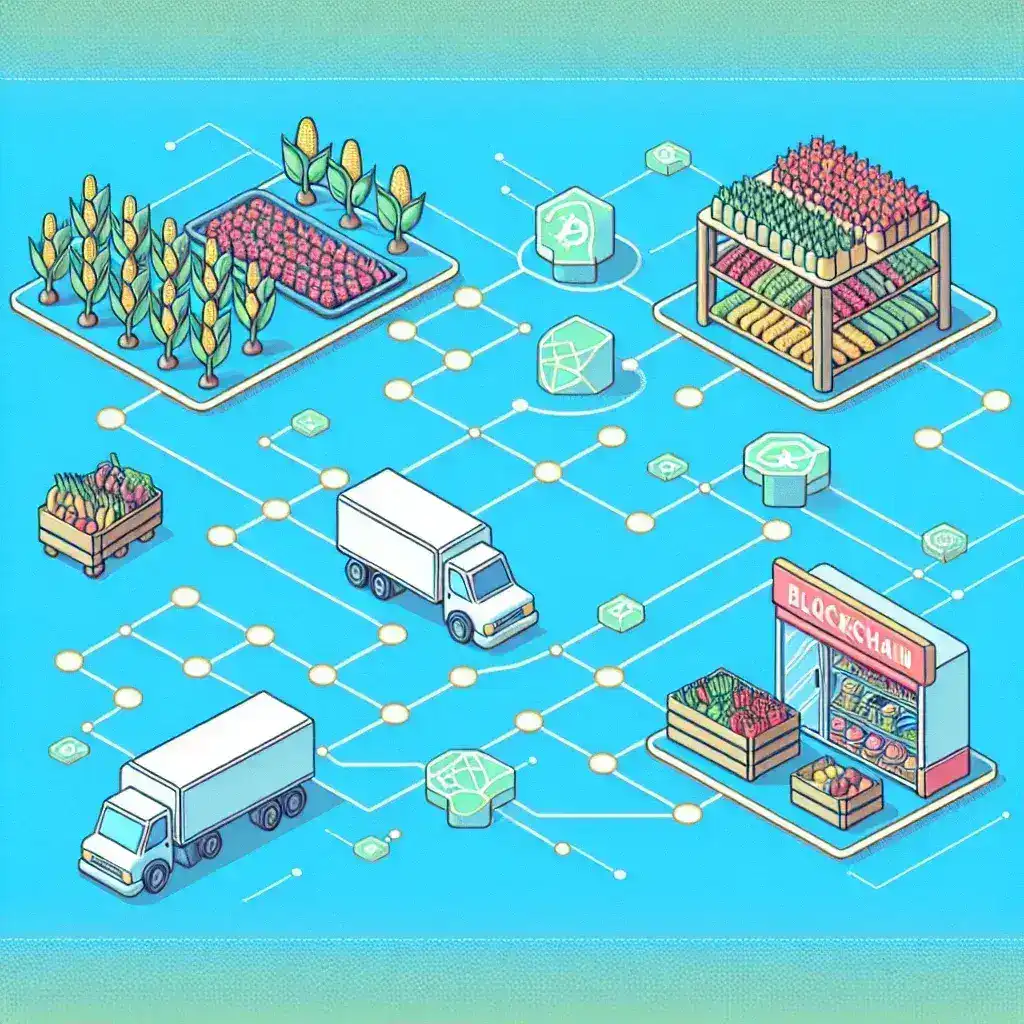Introduction
This month, the United States Department of Agriculture (USDA) is embarking on a groundbreaking initiative to trial blockchain technology for food traceability. This move is part of a broader effort to enhance transparency in the food supply chain, ensuring that consumers can trace the origins of their food products with unprecedented clarity. In a world where food safety is paramount, this initiative stands to revolutionize how we understand and interact with our food systems.
The Historical Context of Food Traceability
Food traceability is not a new concept. For centuries, farmers and producers have maintained records of their produce, yet these records have often been fragmented and difficult to verify. With increasing issues surrounding foodborne illnesses, regulatory compliance, and consumer demand for transparency, the need for an effective traceability system has become critical.
Previous Efforts
- In the early 2000s, the USDA implemented initiatives aimed at improving food safety through better record-keeping and tracking.
- In 2011, the Food Safety Modernization Act was enacted, which pushed for more stringent traceability standards.
- However, traditional systems often relied on paper trails and manual processes that could be easily manipulated or lost.
Why Blockchain?
Blockchain technology offers a decentralized, secure way to record transactions, making it ideal for food traceability. Here are several reasons why the USDA is choosing to trial this technology:
- Transparency: Blockchain provides an immutable record of transactions, allowing all parties in the supply chain to access the same data.
- Security: Data on the blockchain is encrypted and cannot be altered, reducing the risk of fraud.
- Efficiency: Smart contracts can automate various compliance procedures, saving time and resources.
How Blockchain Works for Food Traceability
At its core, blockchain technology is a distributed ledger that records transactions across many computers so that the registered transactions cannot be altered retroactively. In the context of food traceability, each step of the food’s journey—from farm to table—can be documented on the blockchain.
Step-by-Step Process
- Data Entry: Farmers input data about their products (e.g., harvest date, location) into the blockchain.
- Processing: Each processing facility logs their data, creating a continuous chain of information.
- Distribution: Wholesalers record their handling of the products, ensuring accurate tracking throughout distribution.
- Retail: Finally, retailers can access this information to provide customers with the origin of their food products.
The Current Trial by the USDA
As part of this trial, the USDA is collaborating with various stakeholders, including farmers, processors, and retailers. The goal is to test the practicality of blockchain systems in real-world scenarios, addressing potential challenges and evaluating the benefits.
Objectives of the Trial
- To assess the effectiveness of blockchain in enhancing traceability.
- To identify operational challenges and suggest improvements.
- To gather data on consumer perceptions and willingness to engage with blockchain technology.
Potential Benefits for Consumers and Producers
The implications of successful blockchain implementation in food traceability are vast:
- For Consumers: Enhanced food safety and the ability to verify product authenticity empower informed purchasing decisions.
- For Producers: Improved efficiency and reduced costs in managing supply chains can lead to better profit margins.
Consumer Trust and Transparency
In an era where consumers are increasingly conscious about the origins of their food, the ability to trace products back to their source fosters trust. Blockchain can provide consumers with detailed information about their food, such as origin, handling practices, and environmental impact.
Challenges Ahead
Despite its potential, implementing blockchain for food traceability is not without challenges:
- Cost: Initial setup costs can be significant for smaller producers.
- Integration: Existing systems and processes may need to be overhauled to work with blockchain technology.
- Education: Stakeholders must understand how to use this technology effectively.
Expert Opinions
Experts in the field emphasize the importance of collaboration between all parties in the food supply chain. According to one food safety expert, “If we can successfully implement blockchain technology, we will not only enhance food safety but also rebuild consumer trust in our food systems.”
The Future of Food Traceability
As the USDA continues its trials, the future of food traceability looks promising. With successful results, we could see a broader adoption of blockchain technology across the industry.
Future Predictions
- Increased adoption of blockchain technology among producers and retailers, leading to widespread transparency.
- Potential for regulations to mandate traceability measures, pushing more companies toward adopting blockchain.
- Enhanced consumer engagement, with tools developed to allow consumers to access blockchain data easily.
Cultural Relevance
Food traceability is not just a technical issue; it is a cultural one. Different cultures have varying expectations regarding food safety and transparency. Blockchain can help bridge these cultural gaps by providing a universally accessible platform for information sharing.
Conclusion
The USDA’s trial of blockchain systems for food traceability this month marks a significant step toward a more transparent and safe food supply chain. By leveraging this innovative technology, we can create a future where food safety is prioritized, consumer trust is restored, and the integrity of our food systems is upheld. As this trial unfolds, it will be crucial to monitor its outcomes and learn from the experience to shape a better food future.

Leave a Reply